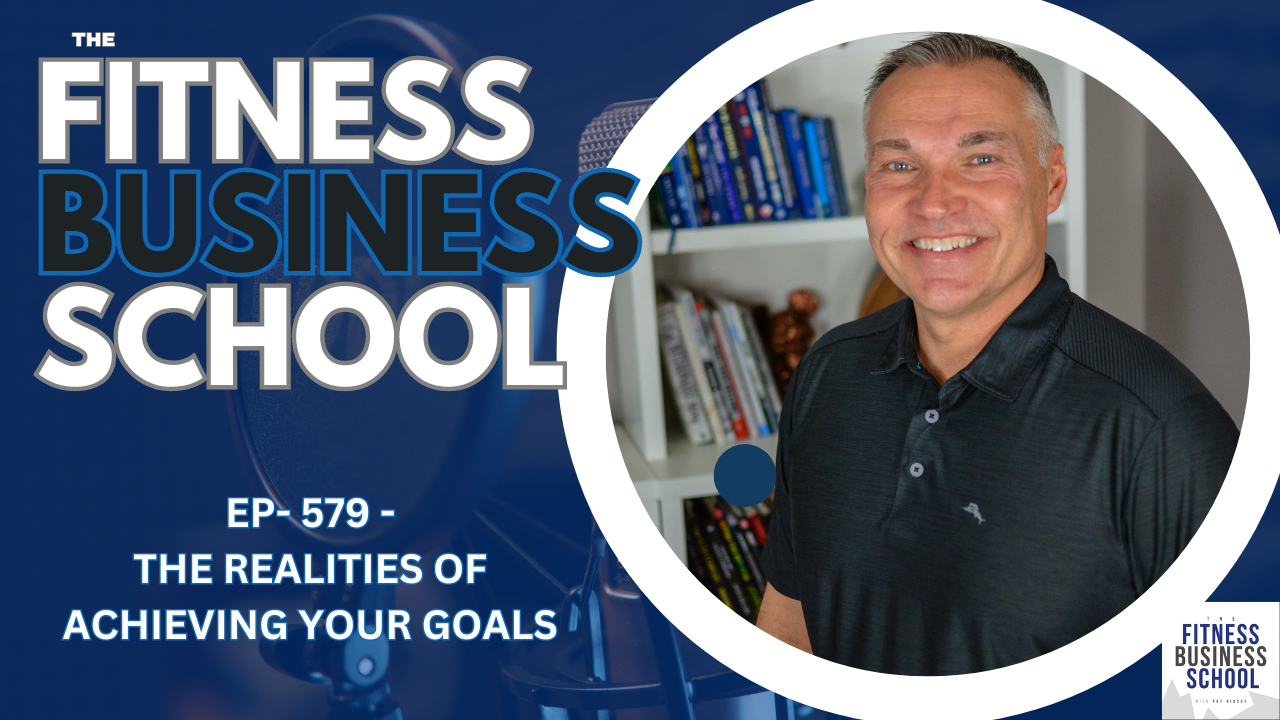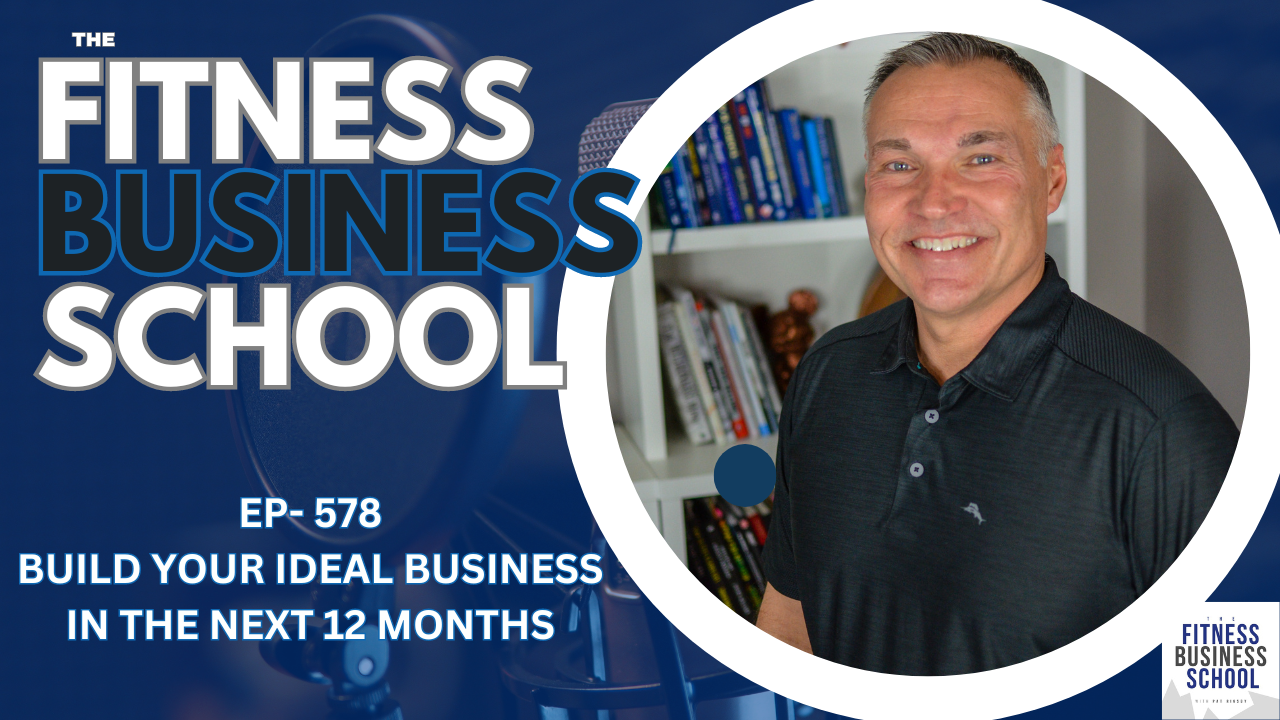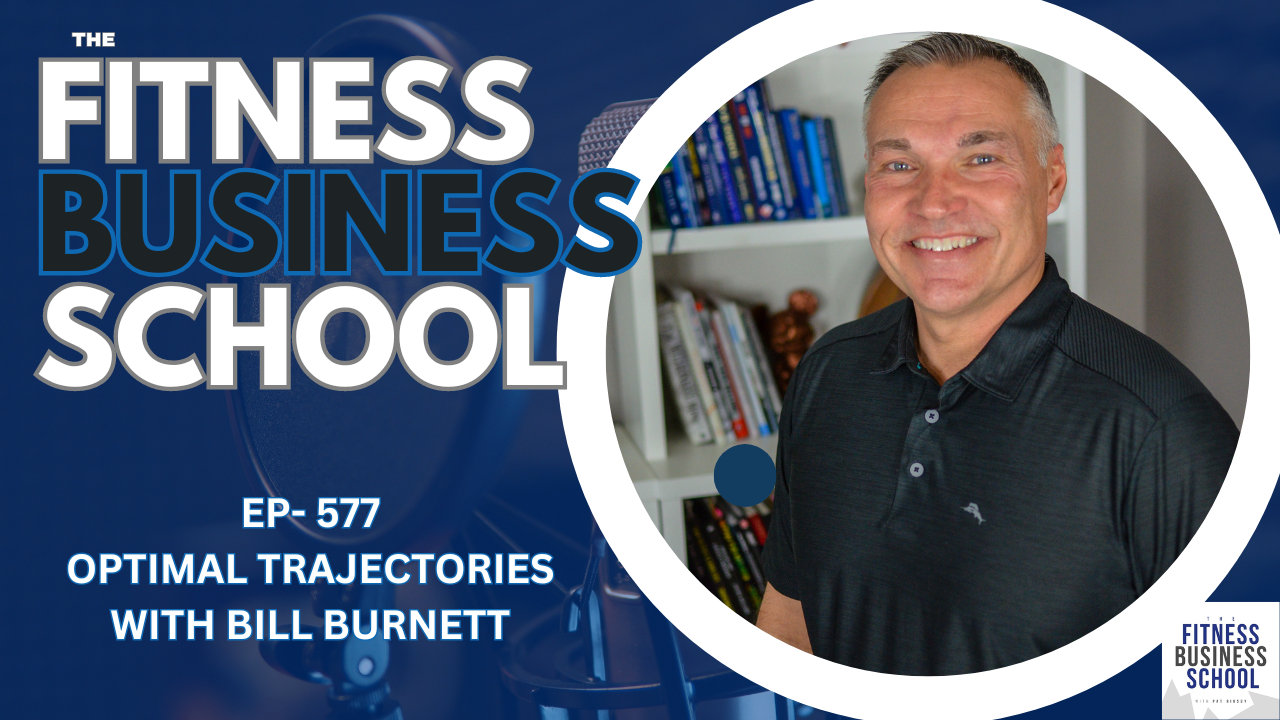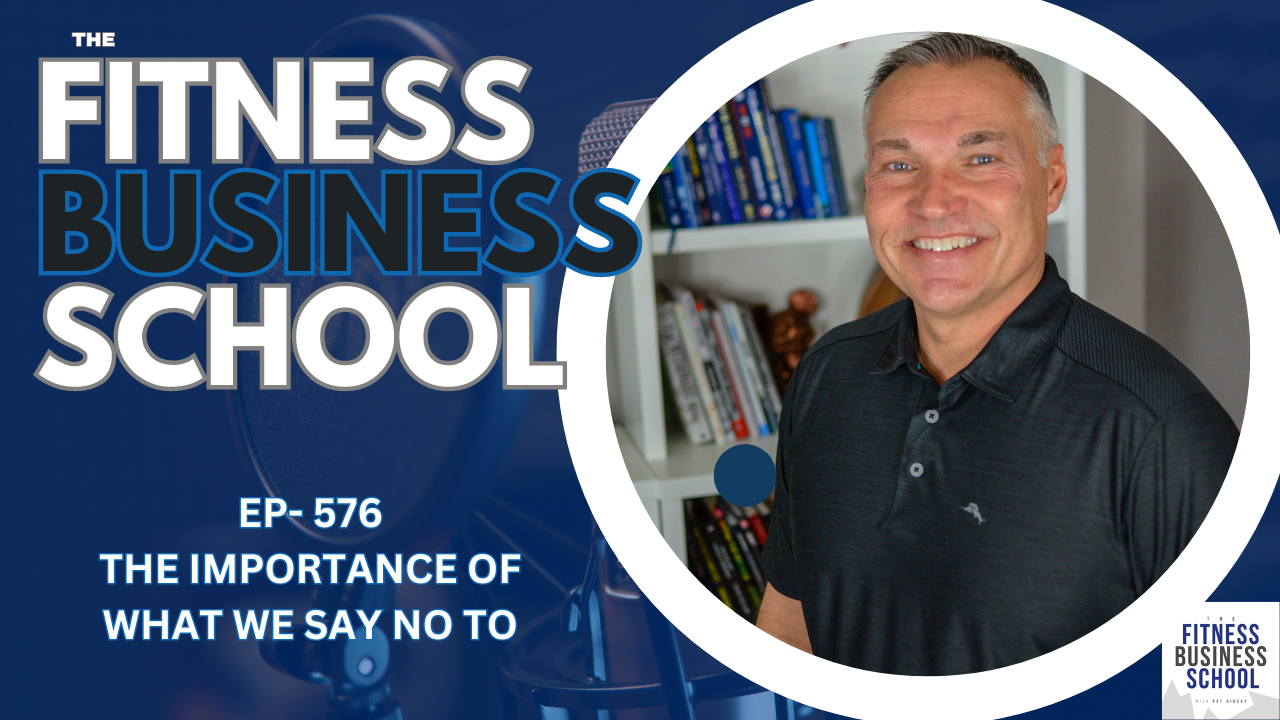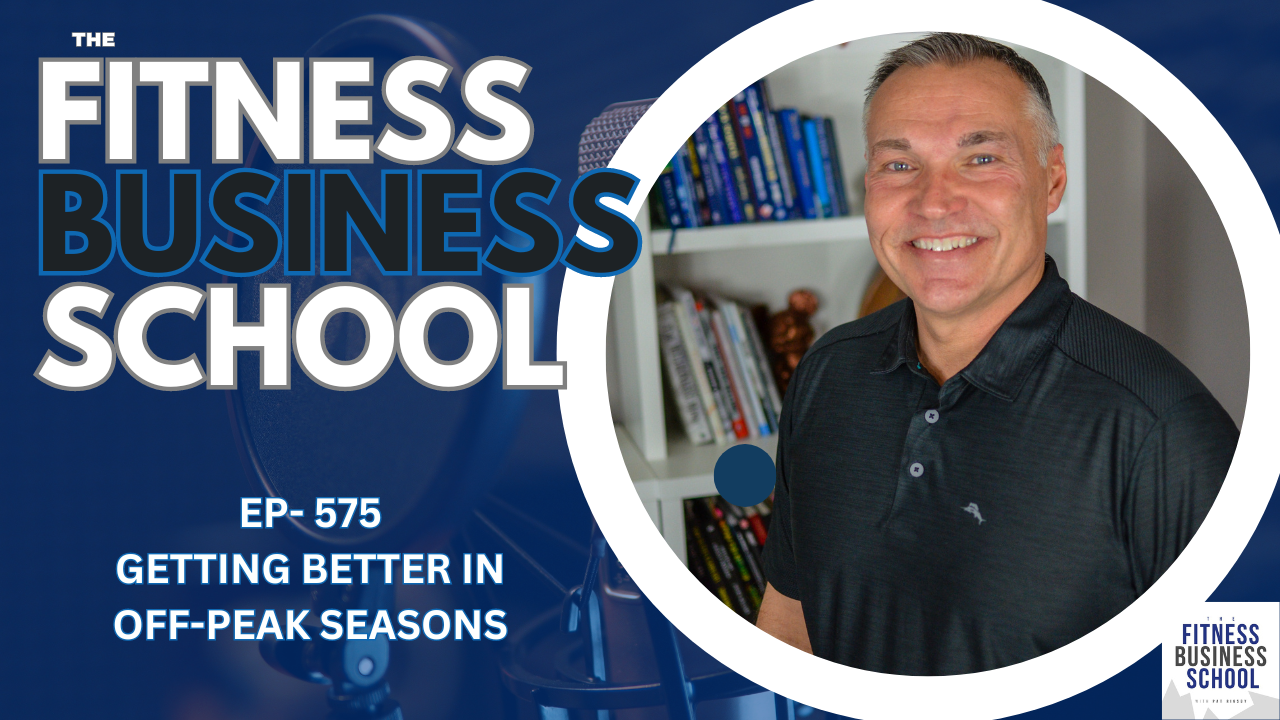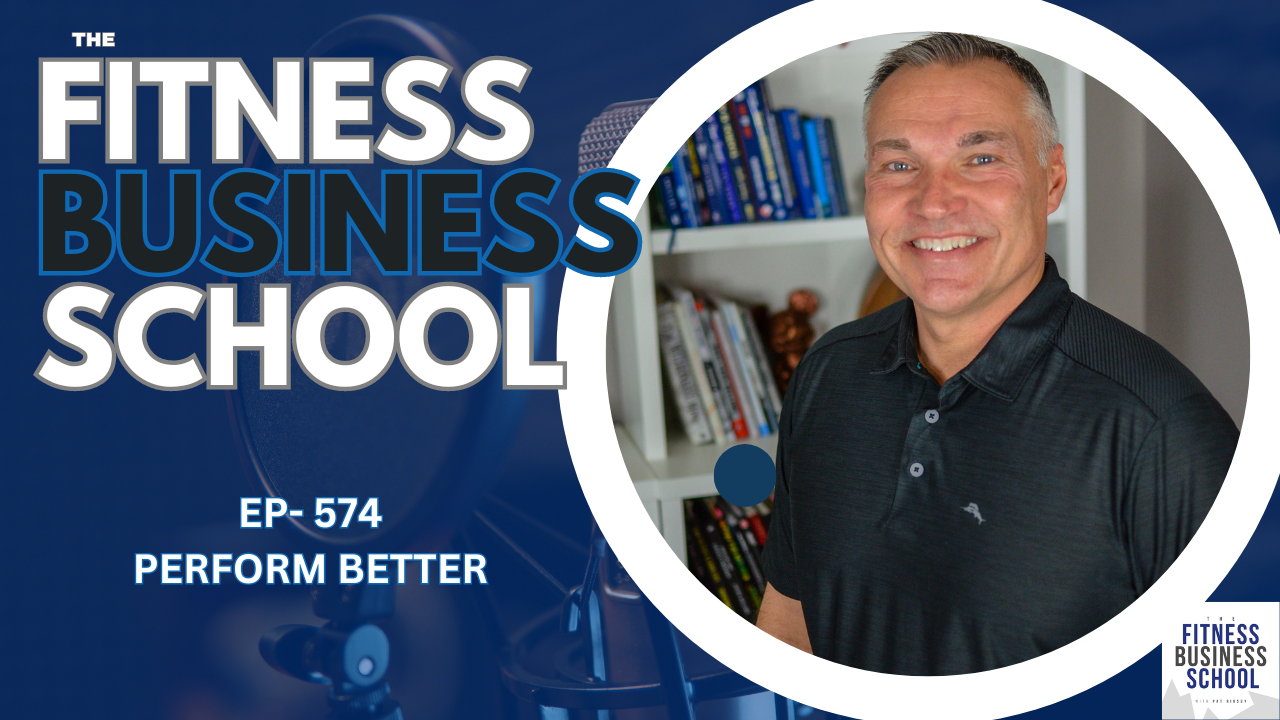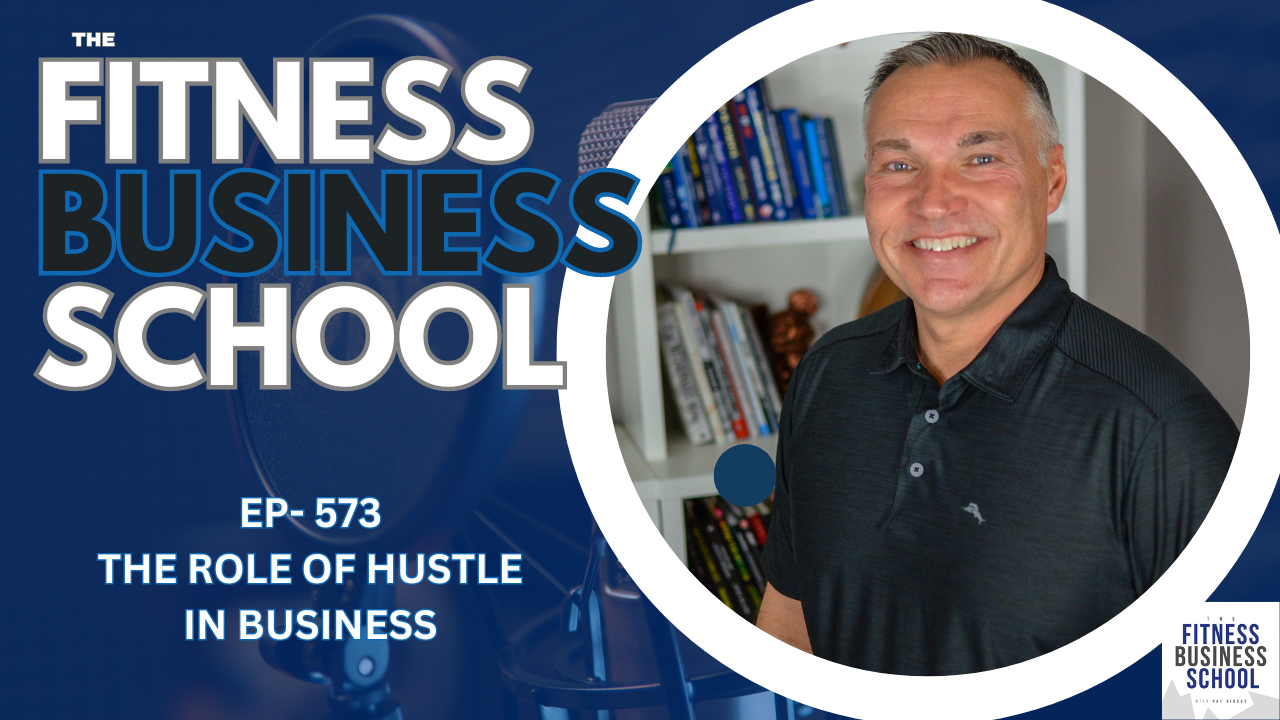Show Notes
00:00 Introduction to Marketing and Selling Framework
00:29 Personal Journey in Sales
02:36 Shifting Perspective and Building Confidence
05:50 Steps to Effective Marketing
09:06 Steps to Successful Selling
12:50 Conclusion and Special Offer
Full Transcript
Hey, Pat Rigsby here and in today’s episode, I want to give you a simple framework for marketing and selling. Let’s get to it.
Welcome to the Fitness Business School podcast, the show for fitness business owners who
want to grow their income, increase their impact and improve their lifestyle. Be sure to listen to the end
of this episode because we have a brand new special offer exclusive for listeners. So stay tuned.
I don’t know about you, but it feels like for most people in the fitness, sports performance, health landscape, marketing and selling can be tough, right? It’s not what people instinctually gravitate to when they get into that field. The things that are available to people to learn how to market and sell are usually rooted in one specific tactic and not a broader, more well rounded approach.
So you can see how things fit together. And I, for me, I didn’t enjoy selling when I first started training. In fact, I was bad at it, was very uncomfortable with it, didn’t like asking, didn’t like asking for money at all. I was not somebody who came from a particularly affluent background or a wealthy community.
And it was hard for me to wrap my head around the fact that people were spending three, four or 500 a month. To hire a trainer when that was like more than my car payment. It was at the top end. It was more than I was paying for an apartment at the time. And so I know when I started selling my journey was like, okay, I went from being a college baseball coach to running a baseball softball academy.
And then moved into like private sector, personal training, stuff, training, selling training, all that. And the first month that I was in charge of selling training, I was pretty atrocious. Of all the people I sat down with, 18 percent of them bought. And the expectation was that 35, 40 percent should buy.
And I’m like, why am I bad at this? I should be better at this. I am more experienced. I am articulate enough. I’ve recruited, I’ve done some things that you would think I should be at least. And maybe I was wrong, but that’s at least how I thought about it at the time. I think I had to take a hard look at myself and say, look, it was about me.
It wasn’t that I was getting in front of poor prospects or anything like that. So I thought back to when I was a college baseball coach. And man, when people would come to campus, I was a young coach in my twenties and I would have parents with their child, the most valuable thing to them on earth.
And they’re saying, okay, I’m going to entrust this coach to be the, a mentor and a guide on their college journey, because in that level of college sports, I had far more input than anybody’s professor Dean or whatever in that kid’s journey. And we didn’t have any scholarship money in my first four years as a college coach. And then the last couple of years we had 1.7 scholarship. You divide that up over 40 kids and that ends out maybe paying for like a book. And so it wasn’t, Oh, I am negotiating with them to get them to invest a lot of money or, get, we’re going to invest a lot of money in their kid. It was like, no, Hey, this is the best environment for them.
This is a place they can grow and develop, and it’s going to be great for them. Athletically, academically, socially, all the stuff that, That I think parents hope for when they’re essentially dropping their kid off at college. And if I could make that sale, knowing that what I was selling, was maybe not as attractive on the surface is what my competitors were selling.
I should be able to make this sale. So that shift in perspective gave me a little bit of confidence. And before long, I was closing sales or getting people to say yes, 50, 60 percent of the time. And if you think that percentage is low, I would tell you that the people that talk about closing 90 percent are just taking orders.
They’re not actually sitting down in a consultative selling environment with prospects. They’re like the person at the drive through at Chick fil A that they’re just waiting on the person to come in with their credit card and order in hand. 50, 60 percent historically is pretty awesome for if you’re actually dealing with a broad cross section of prospects.
And I just dove head first into it and became a student, a heck I’ve coached entire health club chains on selling. I’ve coached franchise organizations on selling. I’ve coached. My, my sales stuff’s been used in big certification organizations, even a little bit at universities, go figure. And really all of it started with just having a shift in confidence.
And it’s hard to be confident if you don’t really know what the prospects journey looks like and get comfortable with that and help serve as that guide through that journey. And so you see it as you being a guide as a partner, not some antagonistic thing. Let me walk you through it step by step. So with marketing really begins with just getting somebody’s attention.
That’s it. What can you do that will gain the person’s attention that you want to work with, that you want to coach because you have to get their attention, but you also want to get their attention in a way that pre sells them on giving you their future attention and learning more. And then the next step is maintaining or retaining that attention.
And that’s harder. Frankly, if you think about the things you subscribe to or bought, or even shown an interest in over the past couple of years, how many of those things are still a focal point for you now, at one point it may. Have been really interesting to you. And then before long, it’s, ah, you know what?
I’m not paying attention to that anymore. So to move someone from prospect to client, you have to maintain their attention from the time they become aware of you till the time they want to buy, which is frankly, one of the more challenging things to do in a really saturated market with people vying for that same person’s attention.
So those are steps one and two. Step three is you need to position yourself as an authority. Really? Getting somebody to buy is a matter of attention, authority, and timing. If you can get and keep their attention, then they have to see that you can actually help, right? You have to be somebody who can help them solve their problem.
They can help them get to where they want to go, that you can be that partner, that guide, that person, that it helps them believe and achieve. So you have to be an authority in that sense. And then. The fourth piece of marketing is you need to be there when they’re ready to buy because that’s timing. Now, so many people want the consumer, the prospect to buy on their timeline, but that’s not how buying works.
And if you look at your own buying journey, you will find that to be true no matter how much you wish it were not when it comes to you being the seller. So your people that you’re communicating with, they may be. The right person, they may meet all your prerequisites, except they’re not ready when it’s not happening.
So you need to maintain their attention. You need to be an authority until they’re ready. That’s what marketing looks like, but everything we get caught up in is. It’s tactical, right? But think about it back at back things a step out and think about this from that kind of journey that I just alluded to referrals are simply a way to get somebody’s attention and gain some authority since your client is presenting you as somebody that the person they’re referring should trust.
They’re endorsing you. They’re social proof. A Facebook ad is simply a way to get somebody’s attention. Social media posts are just an attempt to retain somebody’s attention. So as you build your approach to marketing, think about those four components and figure out how you Are not only most comfortable accomplishing these, but how you’re best, how you can stand out.
And if you play to your strengths, and as long as those four are done, you’re just, your marketing is going to work. Now, moving on to selling. The people that we’re selling to, the people that we’ve got to come in and be in some sort of consultative environment or connect with us and be in a conversation about us working together, they need to know and trust you.
And for the most part, we buy from people we know and trust. Yeah, there’s the exceptions. I think we’ve all bought from somebody that we tolerated buying from, but if you want to convert at the highest possible level and you want to get the right people in, you need to be somebody people know and trust because this isn’t a transaction.
These people are walking through your front door and then hopefully they’re sticking around two to four days a week. For a long time. So there has to be some of that know and trust factor in play. And then you need to be able to get people to tell you where they want to go. All too often when somebody struggles with selling, it’s because they’re trying to impose their beliefs and their wishes and convince somebody of things instead of simply asking them.
So one of my favorite things to do is just say, Hey, if you joined our program and we’re sitting down together a year from now. What would you feel like you would have needed to accomplish or would have had to happen for you to feel like this was an absolute success? Let them tell you, let them paint the picture.
It’s going to create this kind of future paced image for them. It’s going to give you clarity on what they actually want, what they value. And then it allows you to ask the follow up question. And this is the third piece of the sales process is. You guys collectively have to determine what they think needs to happen to get there.
Now, notice what I didn’t say you think you may be the expert, but right now we’re trying to discern what they think. So once you know where they want to go, and more importantly, they know where they want to go, then ask what they feel has to change or happen to get there. In fact, here’s the question that I tend to gravitate to.
Okay, for you to enjoy the success that you just talked about and achieve those goals, what do you think has to change or happen for you to get there? Let them sell themselves on the need to change. Let them tell you what they believe they’re looking for to move forward, because it’s way easier for people to convince themselves.
And then you tie it all together by saying, okay, here’s how we can provide what we feel like you need you. So if somebody tells you where they want to go and they tell you what they feel like needs to happen, then you talk about how. Your programs meet those needs, how it empowers that kind of change and helps them get from where they are to where they want to be.
That’s it. You’ve shown them how you can solve the problem. You’ve not been some tricky, hard closing, adversarial, high ticket person. You basically said, look, you said you need this. Here’s how we can do it together. Here’s some evidence that we’ve been able to do it successfully. If you do that, if you make people valued, if you make them feel like this is the right place.
Selling becomes so, so simple. If you struggled with marketing and selling, those eight steps, four from the marketing perspective, four from the selling perspective, are a really straightforward way that you can take your talents, experiences, and skills and turn them into a marketing engine that works for you.
Thanks for listening to this episode of The Fitness Business School.
Before you go, I have a quick announcement:
One of of the things that we’ve been doing with our current clients is taking them through this Ideal Business diagnostic and really what it is, this checklist that allows you to pinpoint exactly what your business needs next so you can keep improving, keep growing, and build a business that you love to own, one that pays you well, one that allows you to have the impact you wanna have and one that allows you to have a lifestyle that you truly enjoy.
In this diagnostic, we walk through everything and we do an evaluation and can instantly pinpoint what you need to do next to build that business that you want. I’m going to extend this opportunity to get on with either me or my team and take you through this evaluation and fix your business’s most vital needs fast.
So if we take you through this, you’re gonna be able to make those vital changes that you need to finally have what I call your Ideal Business. If you’d be interested in going through this entirely free, risk-free diagnostic with us and learn what you already have in place, what you’re doing well and where are your greatest opportunities for rapid improvement are just shoot me an email with diagnostic in the subject line to [email protected].
Again, an email to [email protected] with diagnostic in the subject line will get
you scheduled and take you through this evaluation to help you build the business you want.

